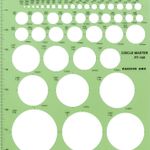
Capturing Charles Rohlf’s Arts and Crafts Model
This site contains affiliate links. I may earn a small commission, at no extra cost to you.
My curiosity in Charles Rohlfs’s work started in 2012 once I noticed footage of his tall again chair and 1898 desk chair. I assumed that they have been probably the most stunning chairs I had ever seen. (A replica I manufactured from the tall again chair seems in Gallery, FWW #291.) I’m interested in the creative and eclectic nature of his work. I additionally like his unconventional nature. He was a bit eccentric, and I suppose that appeals to me too. He’s quoted as saying, “If I make a chair, I’m a chair.”
I’ve been researching and re-creating Rohlfs’s furnishings for greater than a decade to grasp Rohlfs from a woodworker’s perspective and to uncover the development particulars.
Charles Rohlfs (1853–1936)

At the start of the final century, Charles Rohlfs achieved nationwide and worldwide acclaim as one of many world’s most progressive and creative woodworkers. His furnishings incorporates many Arts and Crafts components however is about aside by its distinctive shapes, creative ornamentation, fretwork, and carving particulars, which have Artwork Nouveau, Asian, and Gothic influences.

Like many woodworkers, Rohlfs began constructing furnishings for his residence, working in a rudimentary attic workshop. He then started to take furnishings commissions for buddies and acquaintances. Round 1899 he transitioned from struggling actor to furnishings designer. For the following decade he continued making furnishings in his Buffalo, N.Y., workshop. Rohlfs’s works gained nationwide prominence following publication of a January 1900 Home Lovely article.
Defining traits
Whereas his furnishings is wildly completely different from different work of the time, there are some widespread aesthetic and development threads working via a lot of it.
Rohlfs’s work was made sometimes from mahogany however largely from oak or ash with a darkish, matte-brown end typically tinted with inexperienced or black. His distinctive carvings ranged from aid work with the sweeping curves and swirls of rising smoke to others impressed by the curves of a fiddlehead culminating in an ever-tightening spiral. Fretwork motifs with stylized shapes of crops and timber are present in a lot of his work.
Rohlfs’s development strategies have been additionally unconventional. I measured an authentic model of his swivel desk and have seen pictures of the corridor chair. Rohlfs routinely used screws as a part of his joinery. The screw holes have been coated by protruding faceted plugs. For instance, the stiles, rails, and stretchers of the corridor chair are joined with screws.

His bigger items of casework and even a few of his chairs characteristic tusk-tenon joinery with carved ornamental wedges.
Earlier than turning into a furnishings maker, Rohlfs was a sample maker in a foundry and a range designer. As I used to be developing the swivel desk, I received the sense that Rohlfs had used among the strategies from steel fabrication to construct his furnishings. For instance, the physique of the swivel desk is an inside structural body. The facet panels are purely ornamental and are screwed on.
Recreating Rohlfs
I begin with footage sourced from books and the web. Public sale web sites typically embody very helpful pictures. If doable, I go to a museum to see firsthand the work I need to reproduce. With fundamental info, I draw a easy plan by scaling {a photograph}. If I’ve the peak, width, and depth, I can dimension the opposite elements. Raised plugs point out screw places. If I get caught, I glean clues from plans of different items of furnishings from the Arts and Crafts period.

Swivel desk
The swivel desk is a part of a group referred to as the “Swish Writing Set,” which additionally features a corridor chair and a waste container. Surviving examples of the set are within the ornamental arts collections of many U.S. museums. I noticed the swivel desk on the Nelson-Atkins Museum of Artwork in Kansas Metropolis and the corridor chair on the Los Angeles County Museum of Artwork. I had shut entry to an authentic swivel desk and took detailed measurements and pictures.
A standard designer would construct a hard and fast desk and a swivel chair. Rohlfs did the other. Rotating the desk permits entry to the drawers and door at both finish and to the angled again, which can be utilized to show a e book or art work.
To create the swiveling motion, three small wheels are set into the highest of the bottom. They’re positioned at 120° from one another and an 8-1/2-in. radius from the central pivot level. The desk’s center part connects to the pivot level with a bolt and rotates on the three wheels. The fretted entrance panels are screwed to an internal structural framework.
The desk’s high part sits on the center case. Its pointed-arch sides overlap the center case on the backside and fix with screws. The place there’s smoke there’s hearth: A rising-smoke carving decorates the entrance of the desk, and the highest is completed with flame-shaped carved finials.
Corridor chair and waste container
The corridor chair was first constructed in 1899. Variations of the chair characteristic completely different fretwork patterns, and in another way formed and adorned crest, facet, or entrance rails. My replica is predicated on the 1904 model. Its pierced and carved again panel is likely one of the most elaborate of Rohlfs’s carvings.

There are not any surviving examples of Rohlfs’s waste container, and the one info I had is from {a photograph}. Happily, it’s simpler to breed than the desk or chair. I estimated the scale in proportion to the scale of the swivel desk. The ornamental components have been easy sufficient to sketch from the {photograph}. I reimagined the waste container into an umbrella stand (see “Arts and Crafts Umbrella Stand”).
—Peter Marcucci is a woodworker in Wasaga Seaside, Ont., Canada.
High quality Woodworking Beneficial Merchandise

Circle Information
In the event you like to attract your designs on paper, you will discover the easy circle information to be very useful.

Stanley Powerlock 16-ft. tape measure
With its clean lock, powerful case, compact measurement, and glorious accuracy, this Stanley tape is ideal for workshop use.

Sketchup Class
In the event you’re prepared to leap into designing with CAD, it is a good spot to start out.
Join eletters as we speak and get the newest strategies and how-to from High quality Woodworking, plus particular affords.
Obtain FREE PDF
while you enter your electronic mail handle under.







